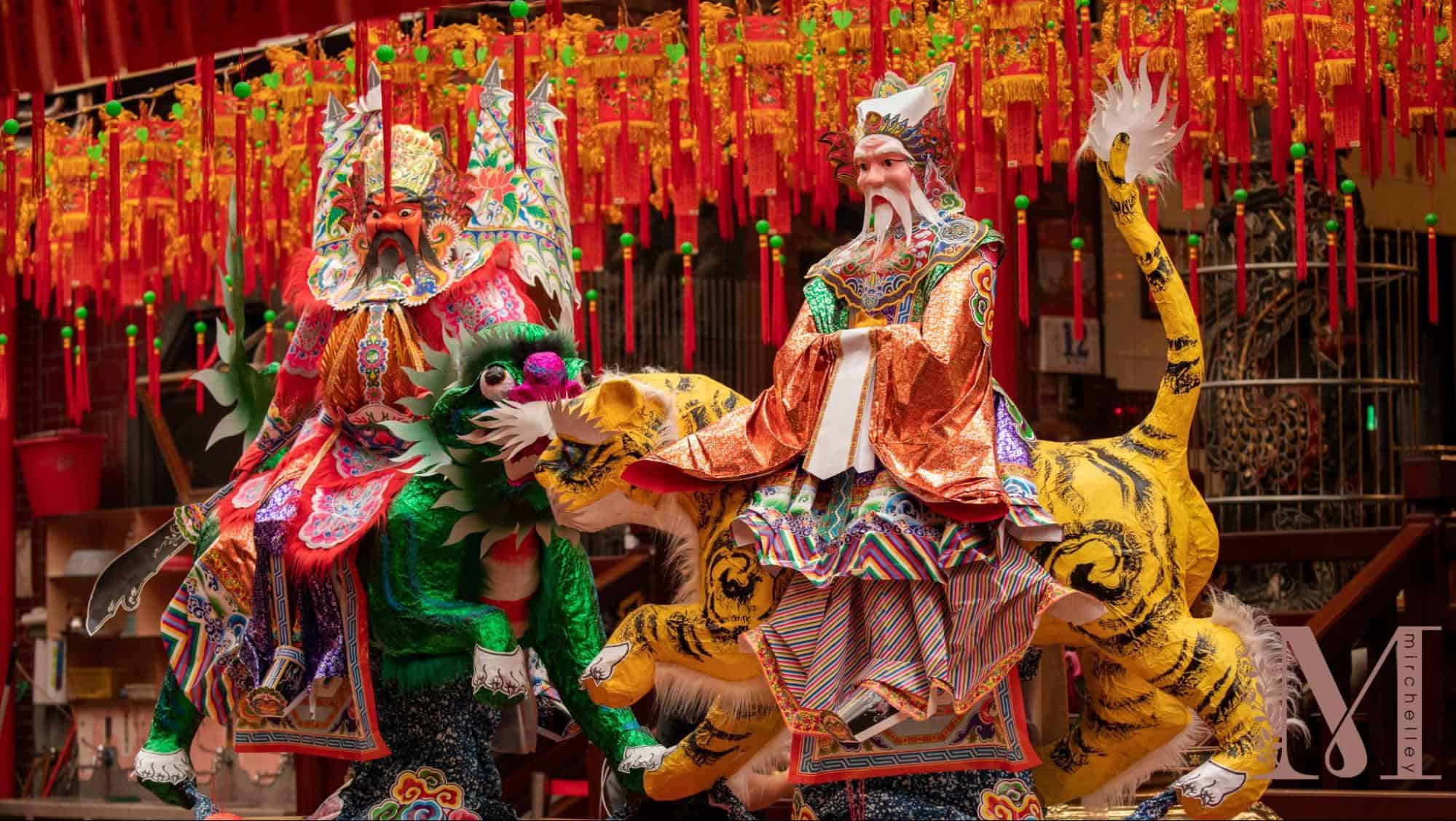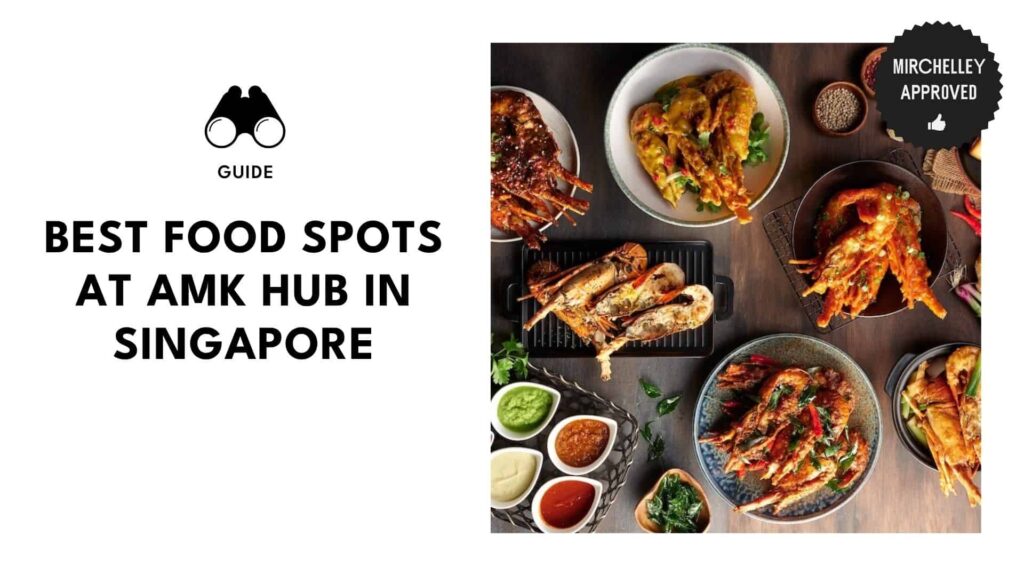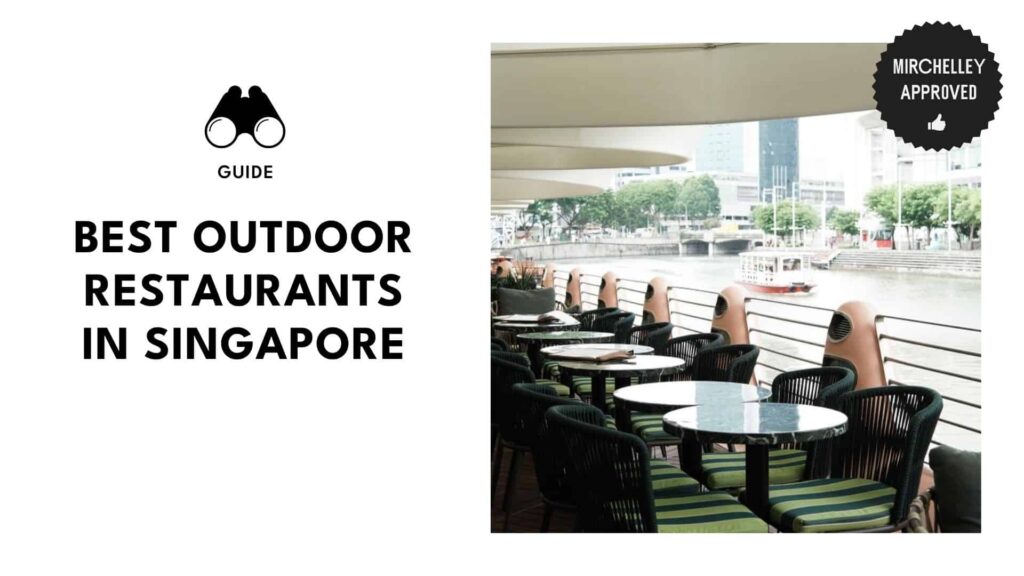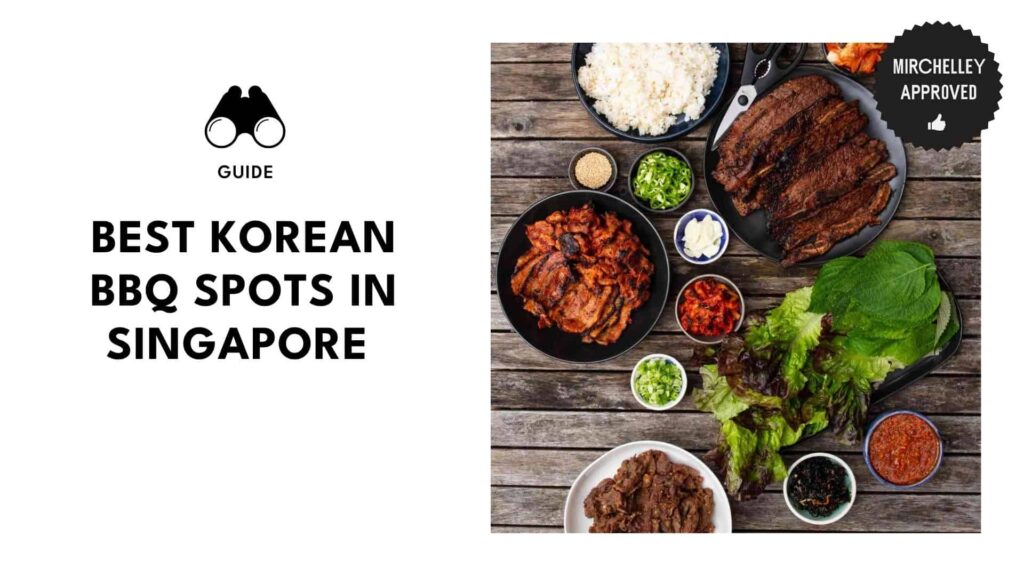Categories > Guides and Tips

Singapore’s Traditional Hungry Ghost Festival: Your Complete Guide
- What Is the Hungry Ghost Festival?
- Reasons Why the Hungry Ghost Festival Is Celebrated in Singapore
- Ancestral Veneration and Honoring the Deceased
- Cultural and Community Bonding
- What Happens During the Hungry Ghost Festival?
- Opening Ceremony and Rituals
- Offering Food to Ancestors
- Burning Incense and Joss Paper
- Traditional Performances
- Floating Lanterns
- Wearing Protective Amulets
- Feeding Stray Animals
- Things to Avoid During the Hungry Ghost Festival
- Swimming at Night
- Staying Out Late
- Whistling at Night
- Mocking or Disrespecting Spirits
- Stepping on Offerings
- Touching Sacred Objects
- Engaging in Confrontations or Conflicts
- Pursuing New Ventures or Business Deals
- Undertaking Redecorating or Renovating Homes
- Common Food Offerings During the Hungry Ghost Festival
- Rice and Noodles
- Red Fruits and Sweets
- Mooncakes
- Tea and Rice Wine
- Dumplings
- Vegetarian Dishes
- Roasted Meats
- Lotus Seeds and Water Chestnuts
Are you always seeking unique experiences connecting you with different cultures’ traditions and stories?
Well, you’re in for a treat today because we’re about to embark on a journey into the captivating world of Singapore’s Hungry Ghost Festival!
I remember the first time I stumbled upon this enchanting celebration.
The vibrant colors, the hauntingly beautiful performances, and the mystique surrounding them left an indelible mark on my memory.
In this guide, I’ll take you through the history, reasons for celebration, and the captivating rituals that make this festival special.
What Is the Hungry Ghost Festival?

The Hungry Ghost Festival, also known as Zhong Yuan Jie in Chinese, is a traditional Chinese festival celebrated enthusiastically in Singapore.
It usually falls on the 15th day of the seventh lunar month, which typically aligns with August or September in the Gregorian calendar.
It is an annual month-long event observed primarily by the Chinese community in Singapore.
The roots of the Hungry Ghost Festival can be found in both Taoism and Buddhism and is a centuries-old tradition traced back to ancient China, believed to have started during the Tang Dynasty around 618-907 A.D.
This festival is when the gates of the spirit world open, allowing restless souls to roam the Earth.
Sounds creepy, isn’t it? But despite its scary concept, the Hungry Ghost Festival holds a huge significance in Singaporean culture.
Reasons Why the Hungry Ghost Festival Is Celebrated in Singapore

The Hungry Ghost Festival is celebrated in Singapore for it is believed to provide comfort and sustenance to the spirits, ensuring their well-being in the afterlife.
One of the primary motivations is to show respect and offer solace to deceased ancestors and wandering spirits.
It’s also a time of reflection, unity, and paying homage to one’s roots, making it an essential part of Singapore’s cultural fabric.
Let’s explore why it holds such significance in Singaporean culture.
Ancestral Veneration and Honoring the Deceased
One of the primary reasons for celebrating the Hungry Ghost Festival in Singapore is the deeply rooted belief in ancestral veneration.
This practice involves showing respect and gratitude to one’s ancestors, ensuring their well-being in the afterlife.
Families create altars in their homes to honor their deceased loved ones, complete with offerings of food, incense, and other symbolic items.
Honoring the deceased is a gesture of love and a way to seek protection and blessings from one’s ancestors. It’s believed that by offering these gifts, you can gain their favor and receive their guidance and protection in return.
Cultural and Community Bonding
The Hungry Ghost Festival is not just a family affair; it’s a time when entire communities come together.
Streets and neighborhoods come alive with elaborate decorations, traditional performances, and communal celebrations.
It’s a time for you and your family to strengthen your bonds with your neighbors, share stories, and participate in collective rituals.
This communal aspect of the festival also fosters a sense of unity and belonging among Singaporeans. It’s a reminder of a shared cultural heritage and traditions passed down through generations.
What Happens During the Hungry Ghost Festival?

Families take the opportunity to perform elaborate rituals during the Hungry Ghost Festival, such as preparing sumptuous meals and burning offerings like incense and paper money.
This devotion is believed to comfort these spirits and ensure they find peace and happiness in the afterlife.
This month-long event typically occurs in the seventh month of the lunar calendar. Let’s dive into the captivating rituals and activities during this inauspicious month.
Opening Ceremony and Rituals

The festival begins with an opening ceremony, often held in a central location within a neighborhood or community.
One of the most iconic features of the opening ceremony is the lighting of large red lanterns, which symbolize the welcoming of spirits to the human realm.
These lanterns, also known as “kongming lanterns,” are released into the night sky, creating a mesmerizing spectacle.
At this point of the ceremony, you can set up a temporary stage and invite religious leaders or monks to lead prayers and rituals to invoke blessings and protect against negative spirits.
Offering Food to Ancestors

Families prepare sumptuous meals and offerings for their deceased ancestors throughout the ghost month.
These offerings typically include fruits, vegetables, meat, and even the favorite dishes of the departed. The food is carefully arranged on ancestral altars, accompanied by burning incense.
It’s believed that by offering food to the spirits, you provide sustenance for them in the afterlife.
It’s also a way of ensuring that the departed are well-fed and content, which is thought to bring blessings and protection to the living.
Burning Incense and Joss Paper

Incense plays a significant role in the Hungry Ghost Festival.
The sweet aroma of incense sticks fills the air, creating a mystical atmosphere. People burn incense to offer to the spirits and purify the surroundings.
Joss paper, also known as “spirit money” or “hell money,” is another crucial festival element. These are paper items resembling money, clothes, or other goods, which are burned as offerings.
It’s believed that the smoke carries these items to the spirit world, where the deceased can use them in the afterlife.
Traditional Performances

The Hungry Ghost Festival is known for its vibrant and captivating traditional performances. These include Chinese opera, wayang (Chinese street theater), and puppet shows.
These performances often depict tales of gods, goddesses, and historical legends, adding a rich cultural dimension to the festival.
It’s worth noting that traditional performances are not only entertaining but also serve a spiritual purpose; they attract the attention of wandering spirits, providing them with entertainment and diverting any potentially negative energy.
Floating Lanterns

One of the most enchanting aspects of the Hungry Ghost Festival is the release of floating lanterns.
During this event, you can inscribe your wishes and messages on the lanterns before releasing them into bodies of water, such as rivers or lakes.
Releasing these lanterns is seen as communicating with the phantoms and seeking blessings, protection, and good fortune.
It’s a serene and magical moment during the festival, symbolizing the connection between the living and the spirits.
Wearing Protective Amulets

During the Hungry Ghost Festival, it’s common for people to wear protective amulets or talismans.
Wearing these amulets ensures one’s safety and well-being during the month when the spirit world is particularly active.
These amulets come in various forms, including pendants, bracelets, and charms, and are believed to ward off negative energy and provide you with spiritual protection against malevolent spirits.
Feeding Stray Animals

The Hungry Ghost Festival in Singapore also extends to caring for the less fortunate, including stray animals.
It’s a common practice for individuals and communities to organize feeding sessions for stray dogs, cats, and other creatures in need.
This act of kindness is seen as a way of accumulating merit and generating positive karma.
It reflects the belief that compassionate actions can benefit the living and the spirits that roam during this special month.
Things to Avoid During the Hungry Ghost Festival

The Hungry Ghost Festival is when the veil between the spirit world and the living is considered thin.
Being respectful and mindful during this period is essential for us to avoid potential misfortunes or unpleasant encounters.
Here are some things to avoid during the festival:
Swimming at Night

You might be tempted to take a refreshing dip in a lake or pool, but hold on! Night swimming is a big no-no during the month-long celebration of the Hungry Ghost Festival.
Elders believed that these spirits could lurk around bodies of water during the festival, waiting for a chance to pull swimmers underwater.
The result? There could be serious dangers like death by drowning.
So, if you’re a water lover, avoiding swimming in open waters during this time is best.
Staying Out Late

We all have those nights when we want to stay out late, enjoying the cool breeze and city lights.
But it’s a good idea to think twice about that late-night adventure during the Hungry Ghost Festival.
Spirits are said to be more active after dark during this festival. Being outside late can increase your chances of bumping into them.
If you really need to be out late, it’s wise to stick with a group and stay in well-lit areas.
Whistling at Night

You should avoid any nocturnal sounds like screaming or whistling. While whistling may seem harmless, doing it at night is taboo during the Hungry Ghost Festival.
It’s because elders believed whistling can act like a dinner bell for spirits, drawing their attention.
And trust me, you don’t want unexpected spectral guests dropping by. So, save your whistling for daytime and keep the spirits undisturbed.
Mocking or Disrespecting Spirits

Respect is paramount during the Hungry Ghost Festival.
You should avoid making fun of or disrespecting the spirits in any way. This includes not taunting or provoking them, which can lead to negative consequences.
Treating the festival with the reverence it deserves is the right thing to do.
Stepping on Offerings

Many families set up altars and make offerings to appease the spirits during the Hungry Ghost Festival.
Accidentally stepping on these offerings or altars can be seen as disrespectful and inauspicious. You should be mindful of your surroundings and avoid such actions.
Touching Sacred Objects

You should avoid touching or tampering with sacred objects or offerings left out for the spirits.
These items hold great significance and are intended to honor and appease the spirits. Interfering with them can lead to negative energy or bad luck.
Engaging in Confrontations or Conflicts

Engaging in confrontations or conflicts during the Hungry Ghost Festival is ill-advised.
It’s believed that negative energy can attract spirits, potentially leading to unwanted encounters or misfortunes.
Therefore, you should maintain a peaceful and harmonious atmosphere during this time and have a smoother festival experience.
Pursuing New Ventures or Business Deals

Starting new ventures or entering significant business deals during the Hungry Ghost Festival is risky.
Elders believed that evil spirits may disrupt or influence the outcome, leading to unfavorable results. It’s better if you wait until after the festival to embark on such endeavors.
Undertaking Redecorating or Renovating Homes

The Hungry Ghost Festival is not ideal for home renovations or redecorations.
It is believed that disturbing the home environment during this period can invite negative energy and disrupt the balance. It’s like trying to rearrange your living room while a dinner party is in full swing.
My advice? You should postpone those home improvement projects until after the festival.
Your home and the spirits will thank you!
Common Food Offerings During the Hungry Ghost Festival

Offerings are made to appease these wandering souls and ensure their blessings instead of misfortune.
Here’s a look at the delicious spread you can find during this festival.
Rice and Noodles

Rice and noodles, the hearty staples of many Asian cuisines, take center stage in the offerings made during the Hungry Ghost Festival. They symbolize sustenance and show respect for the spirits who’ve come for a visit.
Often adorned with fragrant toppings like minced garlic and scallions, steamed rice is a frequent choice. There’s a belief that spirits can easily digest this simple yet wholesome food.
And then there are noodles, representing longevity. You’ll often find them stir-fried with a medley of colorful vegetables or floating gracefully in aromatic soups, offered as a goodwill gesture to the wandering spirits.
Red Fruits and Sweets

Red isn’t just a color; it symbolizes good luck and a powerful protector against evil spirits in Chinese culture.
As you explore the offerings during the Hungry Ghost Festival, you’ll be greeted by a sea of red fruits and sweets.
Ripe watermelons, plump dragon fruits, and juicy pomegranates are artfully arranged to delight the spirits. These crimson treasures serve as a visual and gustatory treat.
Red bean buns, sweet delights filled with a rich red bean paste, are also in high demand.
These crimson treats are crafted to appease the spirits and ensure a harmonious coexistence during the festival.
Mooncakes

If you’ve ever celebrated the Mid-Autumn Festival in Asia, you’re probably familiar with mooncakes.
However, you might be surprised to know that these delectable pastries also appear during the Hungry Ghost Festival.
Mooncakes are often offered to the spirits as a gesture of respect and reverence. These round, golden pastries come in various flavors, with traditional fillings like lotus seed paste and salted egg yolk being favorites.
Their round shape symbolizes completeness and unity amongst Singaporean families and their ancestors, making them a fitting offering for this occasion.
Tea and Rice Wine

No meal is complete without a beverage, and during the Hungry Ghost Festival, tea and rice wine are the preferred choices.
Tea, in particular, is believed to have the power to purify and cleanse. Offered in small cups, it is poured into a saucer as a symbol of serving the spirits.
Rice wine, on the other hand, is a potent alcoholic drink that is sometimes used to pay homage to the spirits.
It’s important to note that the quantity and type of alcoholic offerings can vary depending on regional customs and family traditions.
Dumplings

Dumplings are a beloved culinary delight in many parts of Asia and an essential part of the Hungry Ghost Festival offerings.
These little pockets of deliciousness come in various shapes and sizes, but during the festival, they are often shaped into half-moons or ingots, symbolizing wealth and prosperity.
Dumplings can be filled with various ingredients, from savory to sweet—depending on your taste, and are typically steamed or boiled before being presented as offerings.
Vegetarian Dishes

A unique aspect of the Hungry Ghost Festival is the offering of vegetarian dishes.
Regardless of usual dietary preferences, many people in Singapore choose to go vegetarian during this period.
This act of abstaining from meat is a sign of respect for the spirits and a way to accumulate good karma.
Vegetarian dishes range from simple stir-fried vegetables to elaborate mock meat dishes made from tofu and gluten.
These offerings demonstrate compassion for all living beings, including the wandering spirits.
Roasted Meats

While vegetarianism is a common practice during the Hungry Ghost Festival, you’ll also find offerings of roasted meats.
These offerings cater to the spirits who may have a taste for meat. The most popular choices are roast pork, roast duck, and chicken.
These meats are usually prepared with care, seasoned to perfection, and presented in a way that showcases their succulence.
It’s believed that offering these meats can help appease the spirits and comfort them during their brief visit to the mortal realm.
Lotus Seeds and Water Chestnuts

Lotus seeds and water chestnuts are symbolic offerings during the Hungry Ghost Festival with their unique textures and flavors.
Lotus seeds represent purity and enlightenment, while water chestnuts symbolize good fortune. These ingredients are often used in sweet soups and desserts, such as the popular lotus seed paste or water chestnut cake.
These delectable treats serve as a sweet gesture to ensure that the spirits’ journey through the afterlife is pleasant.
As you can see, the Hungry Ghost Festival in Singapore is a time for solemn rituals and a culinary journey rich in symbolism and flavor.
It’s a unique blend of tradition, superstition, and community that brings people together to honor their ancestors and show compassion for wandering spirits.
Whether you’re a participant or an intrigued observer, this festival offers a captivating glimpse into Singapore’s cultural tapestry and culinary delights.
So, the next time you find yourself in Singapore during the seventh lunar month, don’t be surprised if you stumble upon colorful altars adorned with compelling offerings.
What you should do is take a moment to appreciate the significance of each dish and the cultural richness it represents.
After all, the Hungry Ghost Festival is not just about appeasing spirits; it’s also about nourishing the soul with tradition, togetherness, and delicious food!




